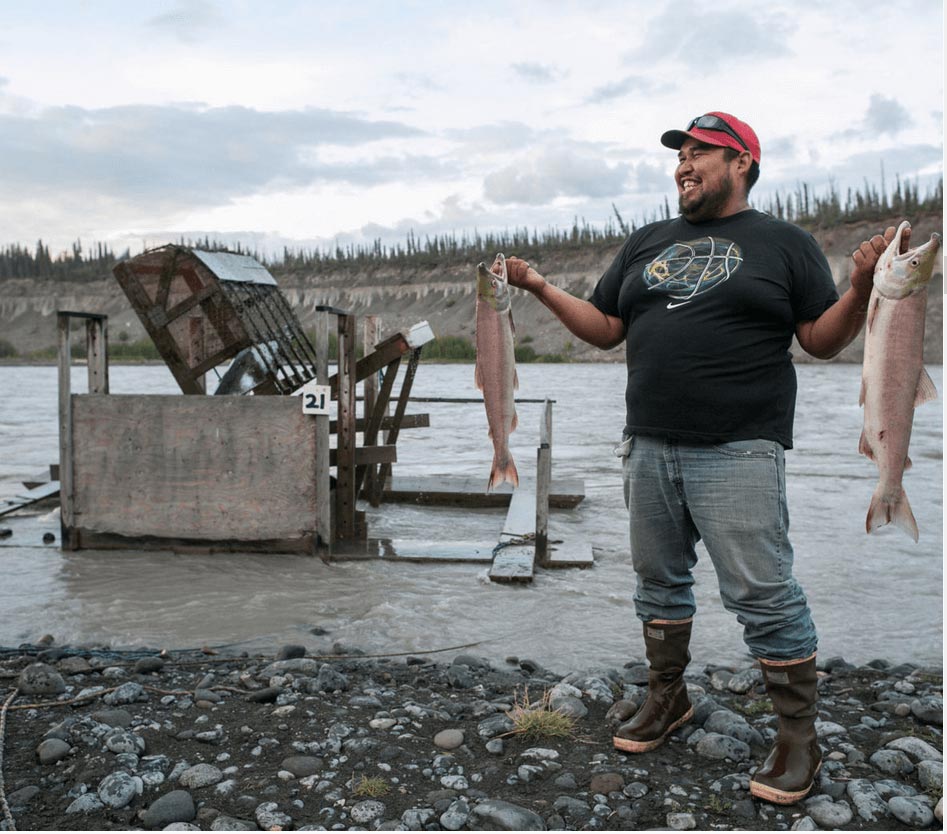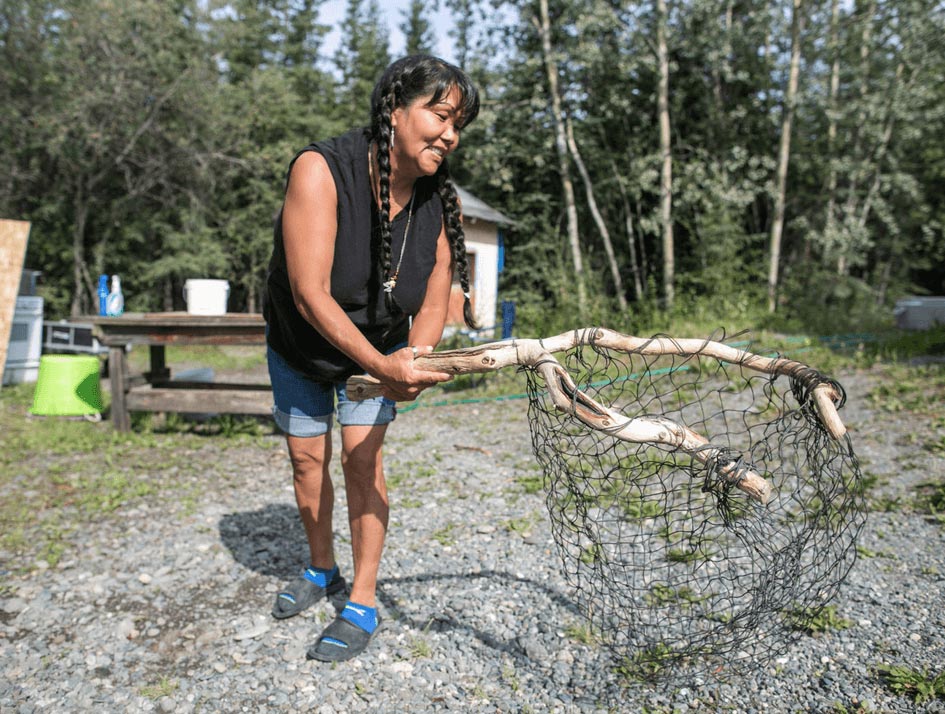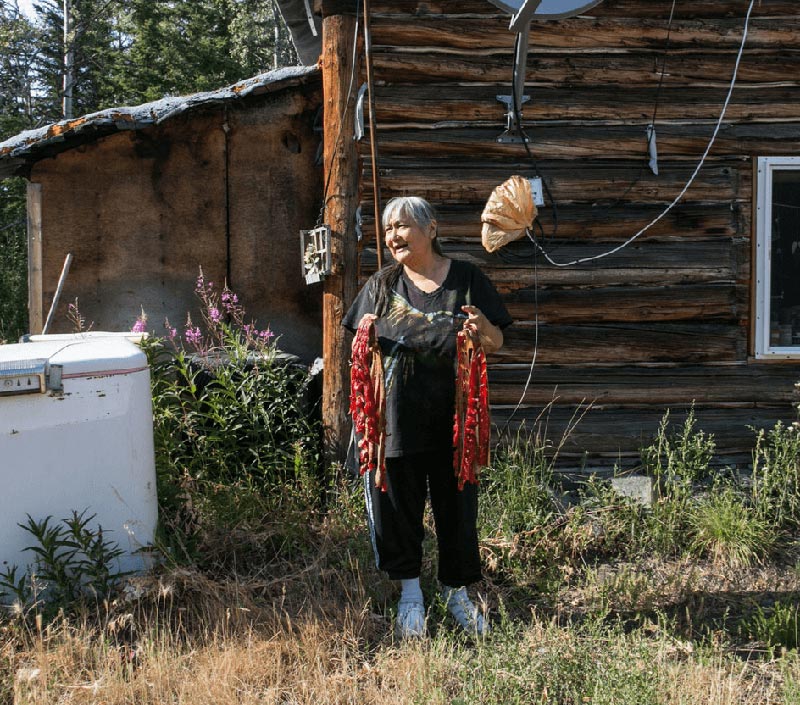
A photographer for Salmon Life, a storytelling initiative by the Salmon Project, traveled to the Ahtna region to explore the role Copper River salmon play in the lives of five families.

Of all the people who fish for Copper River salmon, “The Ahtna Athabascans have been here the longest,” Tursy Ann Smelcer tells the photographer, Nathaniel Wilder.
“A mother of four and a grandmother, Tursy lives alone not far from the river that characterizes her summer,” Wilder writes. “After living in Anchorage for many years, she was drawn back to the valley to live the ‘quiet salmon life’ and just have a place to be. Now she stays busy all summer with salmon. ‘It feels like I’m missing out when I don’t do something with salmon every day,’ she beams.”
Eric Stevens operates a fish wheel on the river at a place he calls “the best spot on the river.” Eric shares his catch with Elders and family members. “I love the feeling of cutting up fish to provide the community,” he tells Wilder.
Paul White was born and raised in Glennallen, but lives in Copper Center now. “He’s more than willing to share his salmon sequestering processes with me as he’s in the middle of a multi-day canning operation and welcomes the break,” Wilder writes. “’We kippered 40 reds and four kings this year. We can about 120 jars a year or so between Tim and I.’ White tells Wilder. “’It’s a 10-day process from catching to cleaning to smoking to canning.’”
“Tim” is Tim Sundlov, who shares a smokehouse and fish wheel with Paul. “Harvesting gets you outside and connects you to the land and seasons,” he tells Wilder. “This
lifestyle has kept me in Alaska. You just can’t do this in the Lower 48.”
Faye Ewan, “an Elder of Kluti-Kaah village (the Native name for Copper Center), has strong feelings about her rights here. ‘Our people are the fishtail people,’ she says. ’We go way back. We never had a limit for fish when we were young. When we had extra we could give it away. Now we only have 500 fish per family of two. It doesn’t go that far. We exercise our sovereignty on our land, as a people. Part of our right is to fish here. It’s how we survive and it’s been a sustainable way of life.’”
The Salmon Project celebrates wild salmon’s place at the heart of Alaska life, and the diverse ways it is present in residents’ values, culture and landscape.
You can read Wilder’s entire story and see his photos at http://salmonlife.org/archived/stories/copper-river/

